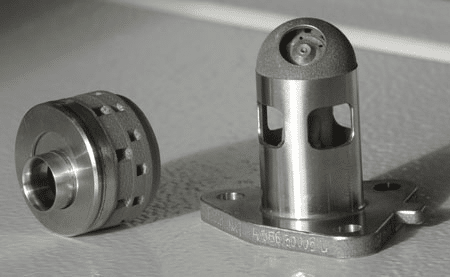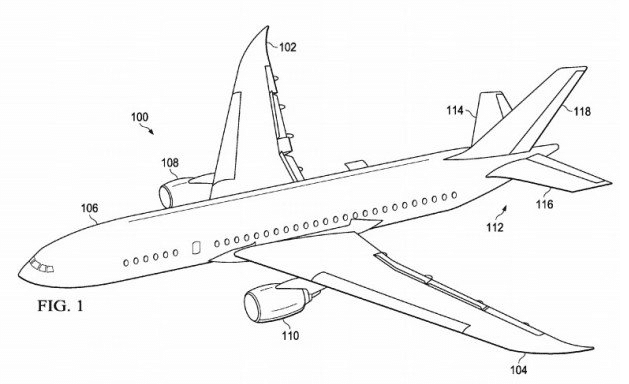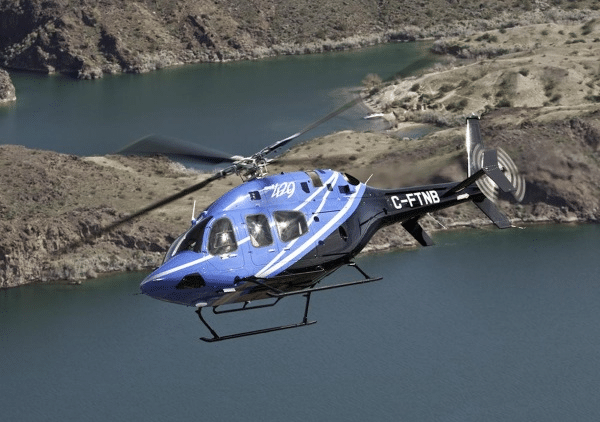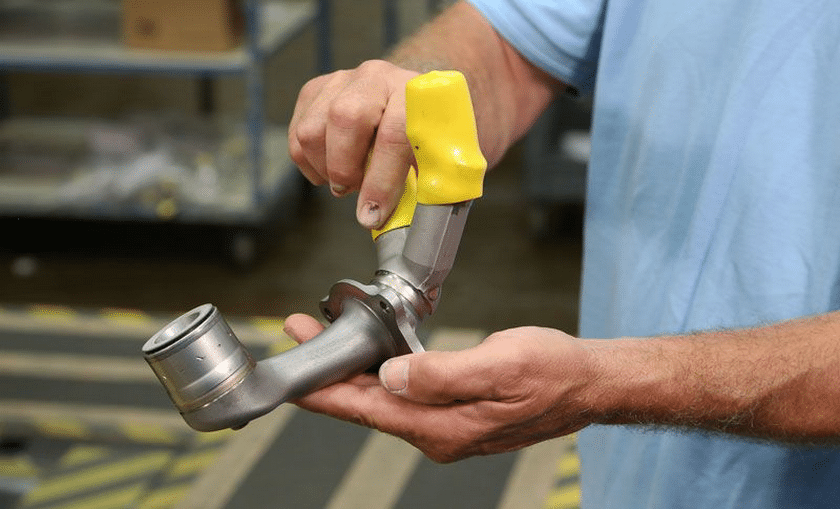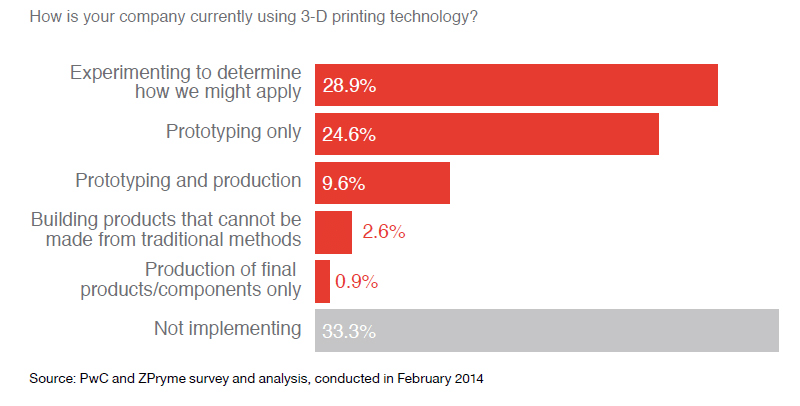 In a 2014 Price Waterhouse Coopers (PwC) survey of more than 100 industrial manufacturers, two-thirds were already using 3D printing. Although most of them were still experimenting or using it only for rapid prototyping, Canalys, a market research firm, anticipates changes ahead and predicts the global market for 3D printers and services will grow from $2.5B in 2013 to $16.2B in 2018, a CAGR of 45.7 %. Source: PwC
In a 2014 Price Waterhouse Coopers (PwC) survey of more than 100 industrial manufacturers, two-thirds were already using 3D printing. Although most of them were still experimenting or using it only for rapid prototyping, Canalys, a market research firm, anticipates changes ahead and predicts the global market for 3D printers and services will grow from $2.5B in 2013 to $16.2B in 2018, a CAGR of 45.7 %. Source: PwC
For the aerospace industry, 3D printing is being piloted and used in production by many of the leading aerospace manufacturers. These companies are using 3D printing to create complex geometric parts at speeds and accuracy levels not possible with traditional manufacturing techniques. The need to scale complex manufacturing has never been greater, and 3D printing is a primary catalyst of this change.
Here are the key take-aways of how 3D printing is emerging in aerospace manufacturing:
- Boeing’s 10 different aircraft production programs are already using over 20,000 plastic parts which were 3D printed. Boeing has also recently filed a patent application related to the 3D printing of replacement aircraft parts. Instead of storing parts at their various hubs, or requiring parts to be shipped to them, possibly causing extensive delays, the company would just pull up a specific file for a part that’s needed, and have it fabricated within minutes or hours wherever they have a 3D printer available. Source: 3dprint.com

- Engineers from Monash University and Amaero Engineering have created the world’s first 3D printed jet engine this year in February 2015. The proof of concept was developed after a challenge from aerospace firm Safran, with the French company providing an old engine. Researchers disassembled an old engine and began manufacturing a new one for them, which took about one year to complete. If all goes to plan, Amaero hopes to have 3D printed components tested within one year, and with commercial certification within three years. Source: Dailytech.com
- Turbomeca, a French helicopter engine manufacturer, is setting up a new manufacturing capability at its facility in Bordes (France). With components scheduled for manufacturing in the facility, Turbomeca’s Arrano and Ardiden turboshafts will be comprised of some 3D printed parts. Arrano test and production engines will feature fuel injector nozzles made using Selective Laser Melting (SLM) techniques. This leading-edge manufacturing process will also be used to manufacture Ardiden 3 combustor swirlers. One SLM machine is already in service, and qualified for mass production, with others to be integrated over the coming years. Source: Turbomeca

- Bell Helicopter, in partnership with Harvest, have developed a method of using 3D printing as a form of final manufacturing for some of their helicopter parts using Harvest’s high-quality EOS laser-sintering (SLS) machines. Among other factors that Bell had to look at when considering 3D printed parts for their helicopter design were heat distribution, powder degradation, dimensional accuracy, repeatability, component quality and performance, and the economics of manufacture, among others, all of which the EOS machines were capable of satisfying. Source: 3dprint.com

- 3D Systems (3DS) has been awarded two research contracts worth over US$1 million to develop advanced manufacturing capabilities for aerospace and defense. The two contracts have been administered by America Makes and funded by the Air Force Research Laboratory (AFRL) and will make use of 3DS’ proprietary selective laser sintering (SLS) and direct metal 3D printing (DMP) range.
The first contract is led by 3DS in partnership with the University of Delaware’s Center for Composite Manufacturing (UDCCM), Sandia National Laboratory (SNL) and Lockheed Martin Corporation (LMCO). The project is designed to integrate predictive technologies with 3DS’ SLS 3D printers to monitor parts at the layer level during the manufacturing process, improving accuracy and repeatability of manufactured aerospace parts.
The second contract, in collaboration with the Applied Research Laboratory of Pennsylvania State University in partnership with Honeywell International and Northrop Grumman Corporation, uses 3DS’ direct metal 3D printing to make it easier for aerospace and defense manufacturers to gain full control of every aspect of the direct metal manufacturing process at the layer level. Source: Metal Power Report
- GE Aviation will use 3D printed fuel nozzles for their new LEAP engine, currently being developed by CFM International, a joint company with split ownership between GE and France-based Snecma. 20 separate parts were once machined together to construct the nozzle’s interior passageways, there is now only one piece built up by a layering of powdered metals melted and fused together through a direct metal laser melting, or DMLM, process—making each nozzle five times stronger than those made through milling, welding, and other subtractive manufacturing processes. CFM’s LEAP will be the first commercial jet engine to contain a 3D printed part in a critical area. Source: Fortune

- Rolls-Royce, a major manufacturer of aero engines, will flight-test later this year a Trent XWB-97 engine fitted with what it claims is the largest component ever built using additive layer manufacturing (ALM). The titanium structure is a 1.5m-diameter and 0.5m-thick front bearing housing containing 48 aerofoils, manufactured using the ALM technique, also known as 3D printing. The engine maker has been working on ALM technology with specialists from the UK’s University of Sheffield and the Manufacturing Technology Centre, near Coventry, as well as Swedish-based Arcam, which makes additive manufacturing machines. Source: Flightglobal
- Alcoa, an aluminum producer, is in process of acquiring RTI International Metals, a titanium producer in 2015. Titanium has become the fastest growing aerospace metal and Alcoa wants access to some promising technologies including 3D printing. Last year, RTI acquired Directed Manufacturing, a company that uses 3-D printing to make metal and plastic parts for the aerospace and other industries. Source: Pittsburgh Post-Gazette
- Aerojet Rocketdyne, a defense manufacturer, has successfully completed a hot-fire test of its MPS-120™ CubeSat High-Impulse Adaptable Modular Propulsion System™ (CHAMPS™). The MPS-120 is the first 3D-printed hydrazine integrated propulsion system and is designed to provide propulsion for CubeSats, enabling missions not previously available to these tiny satellites. The MPS-120 contains four miniature rocket engines and feed system components, as well as a 3D‑printed titanium piston, propellant tank and pressurant tank. The entire system fits into a chassis about the size of a coffee cup. Source: Aerojet Rocketdyne
- NASA MSFC and Made In Space have sent the Zero-G Printer which is the first 3D printer designed to operate in zero gravity. Since it was launched into orbit in late 2014, they have successfully printed 14 unique objects including a ratchet shown in the video below. Their next printer, the Additive Manufacturing Facility (AMF), scheduled to launch later this year, will not be a science experiment like its predecessor but rather a commercially available printer ready for use by anyone on Earth. Following AMF, they hope to launch an extremely complementary zero-gravity material recycler which will be used to turn waste materials into feedstock for the printer. Upcycling trash into 3D printer feedstock will reduce the need to send up new printer feedstock which ultimately helps the ISS, and the astronauts onboard, exist and operate with more independence from Earth. Source: Made In Space
Learn what you need to know about Cost of Quality in Aerospace and Defense from the iBase-t’s free eBook.

